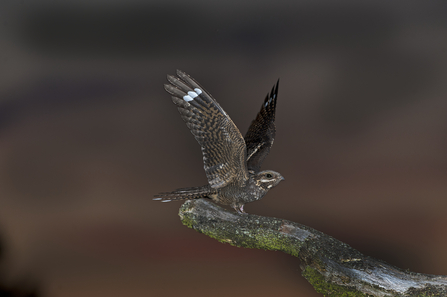Often more heard than seen, the nightjar is a master of camouflage and shadow, coming to life only after sunset. Their churring call, accompanied by strange wing claps and frog-like chirps, makes them feel more folklore than feathered. Indeed, their strange habits and nocturnal lifestyle have led to centuries of myth. Once known as ‘goatsuckers,’ early naturalists wrongly believed they drank milk from goats, a tale that survives in their scientific name: Caprimulgus europaeus.
These elusive summer visitors favour open heathland and woodland clearings for nesting - habitats Hampshire is lucky to have. But their ground-nesting behaviour means they are vulnerable to disturbance. Sticking to paths and keeping dogs on leads is essential to give these birds space to breed safely.
Nightjars have an extraordinary appearance that perfectly suits their twilight world. Their plumage is a mottled mix of browns, greys, and creams, resembling the dappled shadows of leaf litter and dry grass. This intricate patterning acts like natural camouflage, helping them disappear against the earth during the day. Their feathers are soft and fluffy around the head and neck, giving them a somewhat scruffy yet captivating look.


